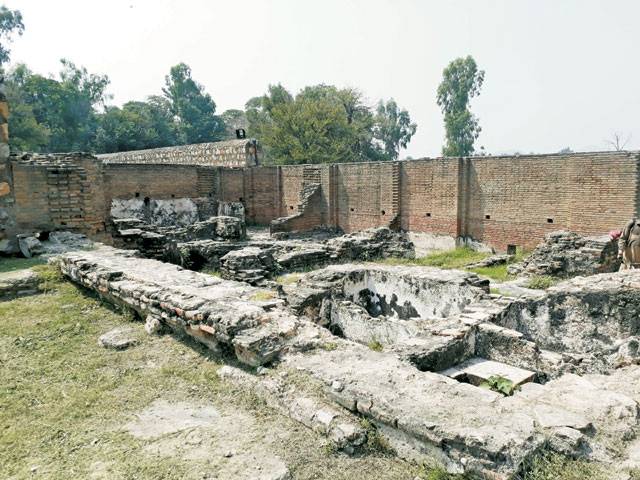Islamabad - Centuries old Mughal Garden of Wah is a beautiful heritage site, yet its amazing architecture and landscape have been unable to pull in tourists.
Located 40 kilometers west from Islamabad, the historic Wah Garden was built by Raja Maan Singh during 1581 and 1586, under the rule of Emperor Akbar. According to history, Jahangir and Shahjehan made alternations to the garden during their rule. Emperor Jahangir also mentioned the garden in his biography when he camped here.
The garden is bordered on the North by river Jhablat and on the south by a mountain; the eastern side is covered by a hillock.
Its evergreen mountains, serene environment and picturesque landscape, all contribute to beauty of the garden.
According to the Department of Archaeology, the garden was constructed during the ruling era of Emperor Akbar.
The locality has great military significance because emperors including Akbar and Aurangzeb had camped in the area during campaigns of Kashmir and Kabul.
The word ‘Wah’ is an expression of awe that was also assigned to three Mughal emperors Babar, Akbar and Jahangir when they first set their eyes on the beautiful locality.
After the fall of Mughal Empire, the garden lost its original architectural features, its boundary wall collapsed, and the water channels suffered.
The British Raj passed it to the local feudal for personal use in 1864 and it was later nationalized after 1970s.
The garden is located on an area of more than 150 kanals, is covered with a boundary wall, a central pool of 200*200 feet measurement, a central canal, and two pavilions is symmetrical formation on either side of central canal, water cascade and a complex of structural remains of Turkish baths.
The main Baradari of the garden is divided into two equal parts by the central canal. The parts consist of three square rooms connected with openings on northern and southern sides of the central canals.
The Baradari was constructed using small bricks laid in thick lime mortar with flat vaulted roofing. The interior of the rooms on either side of the canal was decorated with lime plaster base.
According to archaeologist, Muhammad Bahaddar Khan’s research, the main pool is exceptionally large with a dimension of 214*220, and the size of the surrounding walls varies on all four sides.
Unlike other Mughal gardens, the water pool here has no fountain.
Office in-charge Muhammad Abid, told The Nation that recent restoration work of the garden had started a year earlier to conserve the historic site.
He said the heritage site is only visited by youngsters and people of low-income families on weekends. He stressed the need to promote the historic garden to attract tourists.
“There is a need to create awareness amongst people about the importance of preserving local culture,” he said.
Abid added that people were negligent about the cleanliness of the garden and often misused the architectural sites. Because of that, the department fenced the garden and banned their entry.
“People must also play a responsible role for protecting these sites,” he said.






